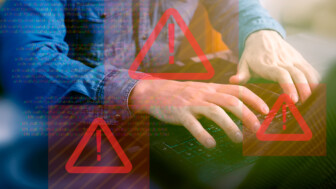Did you notice that Oracle changed Java SE licensing to start charging users per license? While it used to be free, as of a few months ago, using Java has become an expense, something that many have overlooked. Have you budgeted for Java?
Do You Use Java? Doing So Will Now Cost You Extra.
As of April 2019, Oracle’s changes to Java licensing have eliminated free updates, and now charge up to $2.50 per user per month.
Java, one of the most popular programming languages in use today, is a fundamental part of the business world – hundreds of thousands of websites use it
Last summer, Oracle (which owns Java) announced a new subscription-based pricing model for the use of Java SE (Standard Edition), dictating a price per month per user for the continued use of the programming language.
Specifically, the cost is to provide users with access to patches and updates. As of April this year, the pricing went into effect.
Did this slip past you?
Maybe – it seems like a lot of people overlooked it.
But now, third-party patching solutions are moving to Java alternatives to avoid the expense for updates. If you’re unsure about whether you should transition away from Java (or if your third-party vendors are doing so), keep reading to find out everything you need to know.
How Have Java Products Been Changed Into Subscriptions?
Essentially, Oracle has taken the three existing Java products (the licenses for which were purchased upfront, in addition to an annual support fee) and replaced them with two monthly subscription models:
- Java SE Advanced
- Java SE Advanced Desktop
- Java SE Suite
…have now been modified into…
- Java SE Subscription
- Java SE Desktop Subscription
The new subscription models require a monthly fee, on a 1 – 3-year term. This “as-a-service” style pricing is more in line with newer software service trends.
Does This Change To Java Affect You?
If you use it? Yes.
This isn’t just a concern for legacy Oracle users, it’s a concern for all Java users. Regardless of which old Java product you’ve been using, you will have been forced to change to one of the new models and start paying the monthly fee.
Which Java Model Should You Be Using?
Determining which model you should be using is based around your specific needs:
- Java SE Subscription
This is a server-based deployment, meaning you have to know the processor-based metric. Figuring out how many licenses you require means calculating…
Oracle Licensed Server x Cores per Server x Oracle Processor Core Factor
Now, that may be a little complicated for you to figure out on your own. If you’re unsure about the number of cores per server, or any other figure in that formula, you can consult with Oracle or a Nashville IT company.
- Java SE Desktop
This model is a little easier to figure out. As it’s hosted locally on your desktops, it simply comes down to counting the number of desktops – that’s how many licenses you need.
What Do These Models Cost?
Again, this will be dependent on how many users or licenses you have, but a standard range of costs will break down as follows:
Java SE Subscription
(use your volume from the above formula to determine price)
| Volume | Monthly Subscription Price |
| 1-99 | $25.00 |
| 100-249 | $23.75 |
| 250-499 | $22.50 |
| 500-999 | $20.00 |
| 1000-2999 | $17.50 |
| 3000-9999 | $15.00 |
| 10000-19900 | $12.50 |
| 20000+ | Contact Oracle Sales |
Java SE Desktop
| Number of Users | Monthly Subscription Price Per User |
| 1-999 | $2.50 |
| 1000-2999 | $2.00 |
| 3000-9999 | $1.75 |
| 10000-19999 | $1.50 |
| 20000-49999 | $1.25 |
| 50000+ | Contact Oracle Sales |
Do You Really Even Need To Update?
Maybe now that you’ve seen the price, you’re skeptical about even updating at all.
Is it really necessary, if you still have a Java product license that is already lasting you past the end of support in April 2019?
Yes, you absolutely need to update – because you need patches and updates.
Why Do You Even Need Patches And Updates?
In a nutshell?
They keep you safe.
Did you know that one of the most common ways that cybercriminals get into a network is through loopholes in popular software, applications, and programs?
Despite how advanced modern software is, it is still designed by humans, and the fact is that humans make mistakes. Due to this, much of the software you rely on to get work done every day could have flaws — or “exploits” — that leave you vulnerable to security breaches.
Many of the most common malware and viruses used by cybercriminals today are based on exploiting those programming flaws; to address this, developers regularly release software patches and updates to fix those flaws and protect the users.
This is why it’s imperative that you keep your applications and systems up to date.
Unfortunately, most users find updates to be tedious and time-consuming and often opt to just click “Remind Me Later” instead of sitting through an often-inconvenient update process.
Comprehensive and regular patch management is a crucial part of proper security services delivered by a Nashville IT company. Some of the worst data breaches are based on “zero-day exploits”, which are based on exploits found by hackers but not by the developers, leading to severe security risks and an immediate need for patching.
The point is: when it comes to Java, and any other software you use, you need to make sure it stays patched and updated, even if that means paying for it. Otherwise, you need to find an alternative to Oracle Java (such as Amazon Corretto) – and in either case, it’s recommended that you work with a Nashville IT company that will handle patch management for you.
Questions about Java licensing and patch management? Get in touch with us at (615) 600-4411 or info@kraftgrp.com.
Like this article? Check out the following blogs on cybersecurity to learn more:
The new Health Industry Cybersecurity Practices (HICP)






